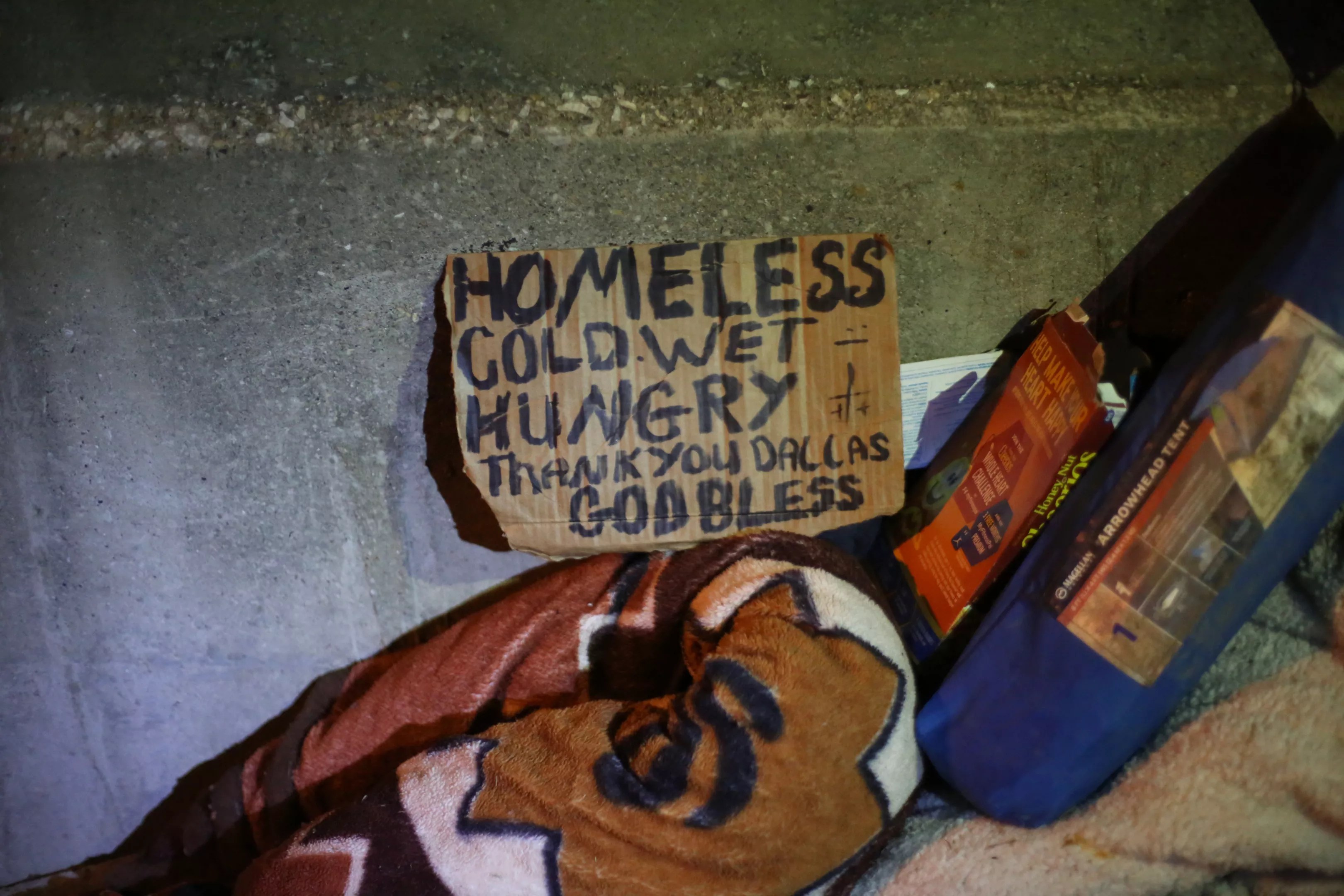
Dylan Hollingsworth

Audio By Carbonatix
Every year, homeless organizations in North Texas take a census of the homeless populations in Dallas and Collin counties. This annual census is called the point-in-time count.
The U.S. Department of Housing and Urban Development (HUD) requires the count for communities to receive certain funding to combat homelessness. The count usually takes place on a single morning or night in January. The thinking is that the cold weather will drive the homeless to shelters, making them easier to find and count.
Two counts are actually required by the federal government: one measuring the sheltered homeless population every year, and another measuring the unsheltered population every two years. However, Dallas and Collin counties do both counts every year on the same day or night. The counts help determine how well the local homeless response system is working, as well as who is becoming or remaining homeless.
Housing Forward, the lead agency for the area’s homeless response system, is looking for volunteers who can help with the 2024 count on Jan. 25.
“The count is useful for understanding larger trends but utterly useless to determine if homelessness is increasing or decreasing.” – Dallas City Council member Cara Mendelsohn
Last year’s count found 4,244 homeless people on the streets and in shelters. The count marked a 4% decrease in overall homelessness. About 72% of those counted were in some form of shelter (emergency shelter, transitional housing, or safe haven projects) while the rest, about 28%, were unsheltered.
There was a 14% decrease in unsheltered homelessness, accounting for the lowest number of unsheltered homeless people the count has identified in the last five years. There was also a 32% decline in chronic homelessness.
As in years past, people identifying as Black, African American or African were homeless at a disproportionate rate, according to the survey. While that demographic represented only 18% of individuals residing in Dallas and Collin counties in the 2020 census, it made up 59% of the point-in-time count last year. About 34% of the population in Dallas and Collin counties are white, according to the 2020 census, and they accounted for 35% of homeless people last year. Some 2% identified as Hispanic or Latin, 1% identified as Asian, and 1% identified as American Indian or Alaska Native.
Most of the sheltered and unsheltered homeless population, 63%, identified as males, while 36% identified as females. One percent, or 29 individuals, identified as transgender, questioning, or a gender that is not singularly male or female.
While the point-in-time count is a useful tool for national and local homeless response systems, some say it is flawed. A report by the National Law Center on Homelessness & Poverty called “Don’t Count On It” identifies some problems with the count, namely that it provides an undercount of the homeless population. “… despite all the community effort and goodwill that goes into them, and due to no fault of the professionals and volunteers who carry them out, the counts are severely flawed,” the report says.
According to the report, the methods used by HUD to conduct the counts produce a significant undercount of the homeless population at a given point in time. The report references a 2001 study that instead used administrative data collected from homeless services providers to estimate the homeless population. It found that the annual number of homeless individuals is 2.5 to 10.2 times greater than can be obtained using a point-in-time count.
Dallas City Council member Cara Mendelsohn, vice chair of the city’s Housing and Homelessness Solutions Committee, said she’s participated in the count many times. She started the volunteer point-in-time count in Collin County when she was the chair of the Collin County Homeless Coalition. Previously, the county would ask local law enforcement personnel to fill out homeless surveys. Mendelsohn recruited volunteers for the count and worked with staff to map it out, engaged groups to donate care kits and led the training of volunteers for the Collin County point-in-time count.
She has also participated in the count in Dallas County twice as a volunteer, and she agrees that the count is flawed.
“The count is useful for understanding larger trends but utterly useless to determine if homelessness is increasing or decreasing,” she said. Using the number of active records in the two counties’ Homeless Information Management System could yield a more accurate count, she added.
While she thinks the count isn’t perfect by any measurement, she still recommends people volunteer to participate in it.
“I strongly encourage people to volunteer and participate in the [point-in-time count],” Mendelsohn said. “I think it can be eye-opening for residents, and more volunteers can help ensure a more complete count.”
Those interested in volunteering can sign up on Housing Forward’s website. The organization is looking for around 1,200 volunteers 18 and older. If you can’t volunteer but still want to help, you can sign up to donate gender-neutral care packages to be distributed on the night of the count. Each care package includes a drawstring bag, a pair of gloves, a beanie, socks, a blanket, hand warmers, toiletries, masks and hand sanitizer. These care packages should be delivered to Housing Forward by Jan. 19. You can sign up to donate care packages here.